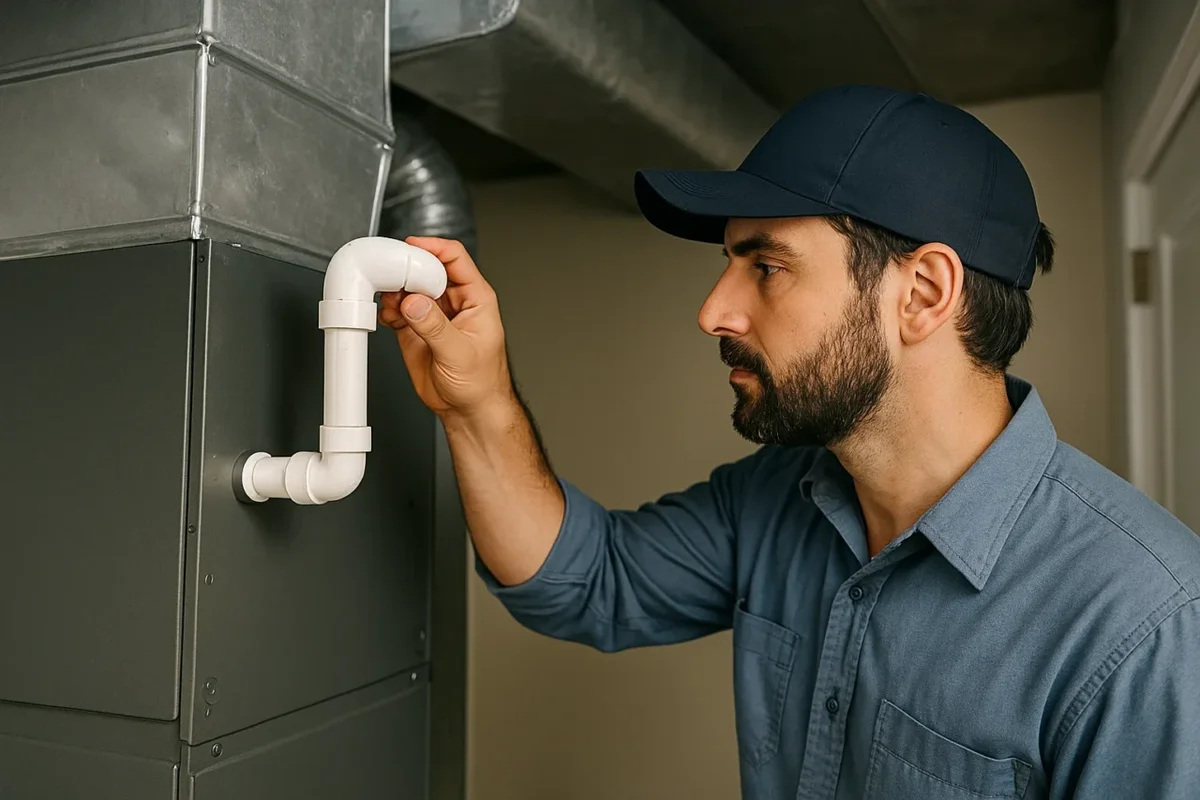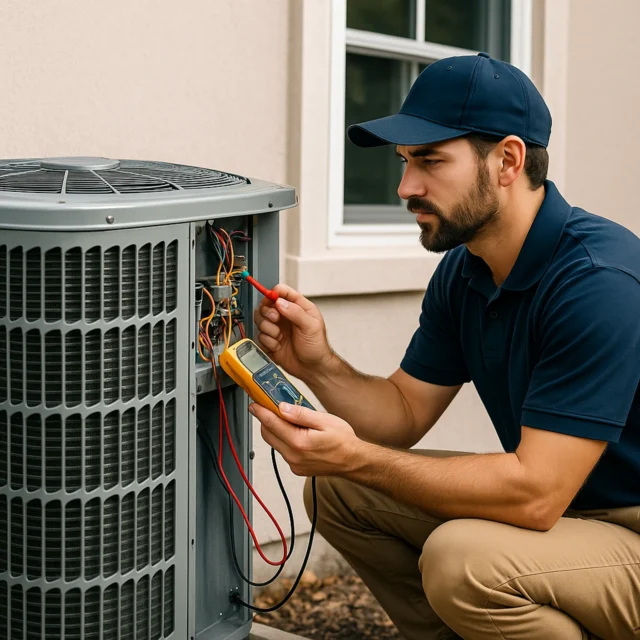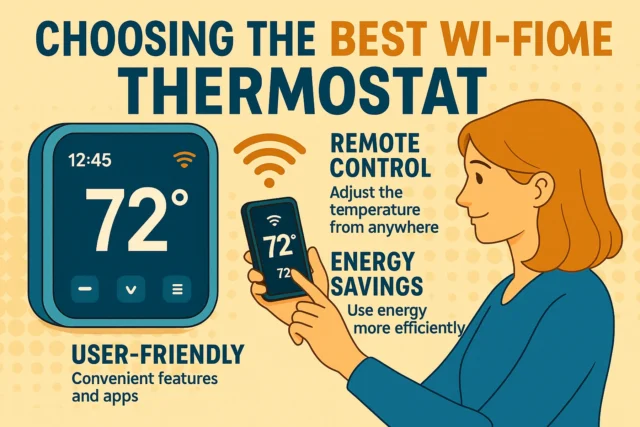How to Fix and Prevent a Clogged AC Drain for a Healthier Home

our air conditioner constantly removes humidity from the air, turning it into condensation that travels through a drain line and out of your home. When this drain gets blocked — often by dust, algae, or mold — it can cause water leaks, reduced cooling efficiency, and even system damage.
A clogged AC drain usually starts small. Dirt and airborne particles mix with moisture inside the drain pan, creating a breeding ground for algae. Over time, this buildup restricts water flow, causing backups and overflows that can damage walls, floors, and electrical components inside your HVAC unit.
If your air handler is working overtime, or if you notice water pooling near your system, it’s a clear sign you need immediate maintenance.
Signs Your AC Drain Line Is Blocked
Before the situation gets worse, here are the most common warning signs:
Water pooling around the indoor unit or under the air handler.
Musty odors or mold smell coming from vents.
AC turns off unexpectedly — many units have overflow shut-off sensors.
Reduced cooling performance, caused by excess humidity.
Visible algae or slime near the condensate line opening.
Ignoring these signs can lead to serious air quality problems, higher repair costs, and even corrosion of your HVAC system’s components.
Why Drain Maintenance Is Crucial for Air Handler Performance
Your air handler’s job is to circulate conditioned air throughout your home — but it can’t do that properly if the condensate system is blocked.
When water backs up, it can flood the evaporator coil area, creating a perfect environment for bacteria and mildew. That not only affects indoor air quality but also puts your air handler motor and electronics at risk.
Maintaining a clean drain line helps your air handler stay efficient, quiet, and long-lasting. It also reduces stress on your HVAC compressor, keeping your system balanced and energy-efficient.
If your air handler needs a check-up or full cleaning, A Customer First AC offers professional maintenance that includes condensate line inspection and clearing.
Learn more about our AC services here.
How to Clean a Clogged AC Drain Line (Step-by-Step)
You can handle minor drain blockages yourself with simple tools and household supplies. Here’s how to do it safely:
Turn off the AC system — both at the thermostat and breaker.
Locate the drain line — usually a PVC pipe near your indoor unit.
Use a wet/dry vacuum to remove debris from the drain line’s end.
Flush the line using a mix of white vinegar and warm water (a 50/50 solution).
Wait 30 minutes, then flush again with clean water.
Replace the drain cap and turn your system back on.
Pro tip: Avoid bleach — while it kills algae, it can also damage plastic pipes and nearby coils. Vinegar is safe, non-toxic, and effective for regular maintenance.
If you notice recurring clogs even after cleaning, your system may have a deeper drainage or air pressure issue that requires a technician’s assessment.
Professional Drain Cleaning and Air Handler Inspection
While DIY cleaning helps, professional HVAC maintenance ensures long-term performance and efficiency. A certified technician will:
Inspect your air handler and evaporator coil for mold or dust buildup.
Clear the condensate trap and flush the entire drain line with pressurized air.
Check for low refrigerant levels or improper installation that may cause condensation issues.
Calibrate your thermostat and inspect the blower fan for balanced airflow.
At A Customer First AC, our technicians specialize in diagnosing drainage and air handler problems before they become costly. Regular maintenance visits can prevent 90% of clog-related failures.
Preventing Future Clogs
The best fix is prevention. Follow these tips to keep your drain clean and your air handler working smoothly year-round:
Clean your filters monthly — dirty filters increase humidity and debris.
Use a vinegar rinse every 1–2 months to break down algae.
Ensure proper insulation around drain lines to prevent condensation leaks.
Keep outdoor AC components clean, free from dust and leaves.
Schedule annual professional maintenance for deep cleaning and airflow balance.
If you ever experience frequent drain issues, it may indicate your system’s airflow isn’t balanced. Your air handler might not be managing pressure effectively — something a technician can adjust.
How Drain Clogs Affect Your Air Quality and Comfort
When condensation can’t drain properly, humidity levels rise inside your home. This can lead to:
Mold spores and allergens circulating through the ductwork.
Sticky, uncomfortable air even when the AC is running.
Bacteria growth on evaporator coils, releasing unpleasant odors.
Reduced air handler performance and increased power consumption.
Proper drainage keeps your HVAC system clean, ensures even temperature distribution, and prevents respiratory irritation caused by mold or dust particles.
When to Call a Professional
If your drain line continues to clog, you hear gurgling noises, or the air handler shuts off repeatedly, it’s time to call an HVAC expert.
Professional tools like compressed nitrogen, drain vacuums, and camera inspections allow technicians to pinpoint deep clogs without damaging pipes. They’ll also verify that your system’s pressure, filters, and coils are balanced — ensuring long-term airflow efficiency.
You can schedule a service visit directly through A Customer First AC’s website. Our licensed specialists will inspect your drainage system and air handler to ensure optimal performance.
Conclusion
A clogged AC drain may seem like a minor issue, but it can cause serious damage if ignored — from water leaks and electrical hazards to unhealthy indoor air. Keeping your drain lines clean and inspecting your air handler regularly is the key to a long-lasting, energy-efficient HVAC system.
For expert maintenance, cleaning, and full system inspections, contact A Customer First AC — your trusted partner for professional air conditioning services in your area.


